Morocco's Atlas and Rif Mountains: The Grandeur of Nature and the Glory of Resistance
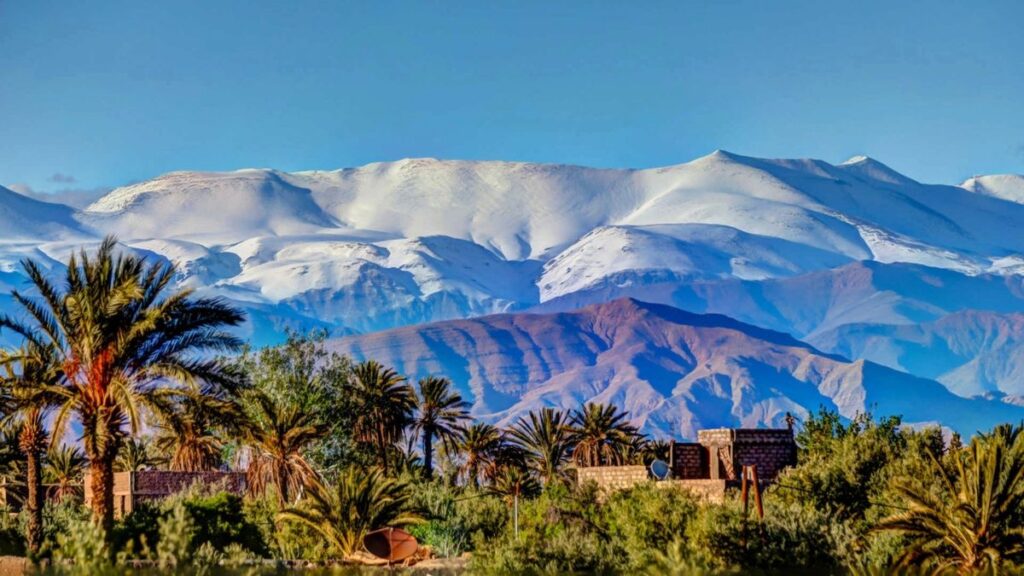
In the heart of Morocco, where the golden desert meets the blue sea, stretches Atlas Mountains Standing tall like an ancient guardian, guarding the secrets of nature and history, this majestic mountain range, whose area exceeds 20% from the territory of MoroccoIt is not just a collection of rock formations, but a world unto itself, encompassing unique environmental diversity, ancient cultures, and peaks reaching the sky. To the north of this unique world, the “Rif Mountains"Which some call"Tell Atlas“With splendor and majesty no less than its brothers to the south, completing the chain of these towering mountain ranges, with their rich natural and human environment.
The Greatness of the Atlas in the Arab World
The Atlas Mountains hold a special place in the Arab and Islamic conscience, not only because of their towering extension that reaches... 2,500 kilometers(To Tunisia), not only because it is the highest mountain in the Arab world, but also for its historical role as a crossing point for trade caravans between Africa and Europe, and as an incubator for the Amazigh resistance against French colonialism and early Islamic movements. Within the embrace of these mountains, Amazigh tribes still preserve their centuries-old traditions and language, and ancient religious zawiyas are also widespread, such as the "Tamgrout" zawiya in the south, which was a center of learning and Sufism.
A breathtaking ecosystem
If you're looking for a miniature example of nature's wonders, look no further than the Atlas Mountains. Middle AtlasCedar forests, which contain between 13 and 26 million trees, are spread across the country and are home to Barbary macaques, while the foothills are transformed into High Atlas To green oases watered by flowing springs. As for the south, where it begins Small AtlasYou will find yourself in front of a magical scene of palm groves extending along the valleys.
The diversity is not limited to plants. These mountains are home to rare animal species, such as the endangered Barbary leopard, mountain gazelles, and golden eagles that soar above the towering peaks.
Mountain People: Multicolored Fabric
The Atlas Mountains are home to a unique demographic mix, with Berber tribes coexisting with Arab communities in cities like Marrakesh and Taroudant. These inhabitants have inherited, through generations, lifestyles in harmony with nature, from traditional farming on mountain terraces to livestock grazing in high pastures, not to mention their architecture, which creates architectural marvels from the soil and rock of these mountains.
Mountain Cities: Between History and Beauty
It is impossible to talk about the Atlas Mountains without mentioning its charming cities, which look like jewels studded among the peaks:
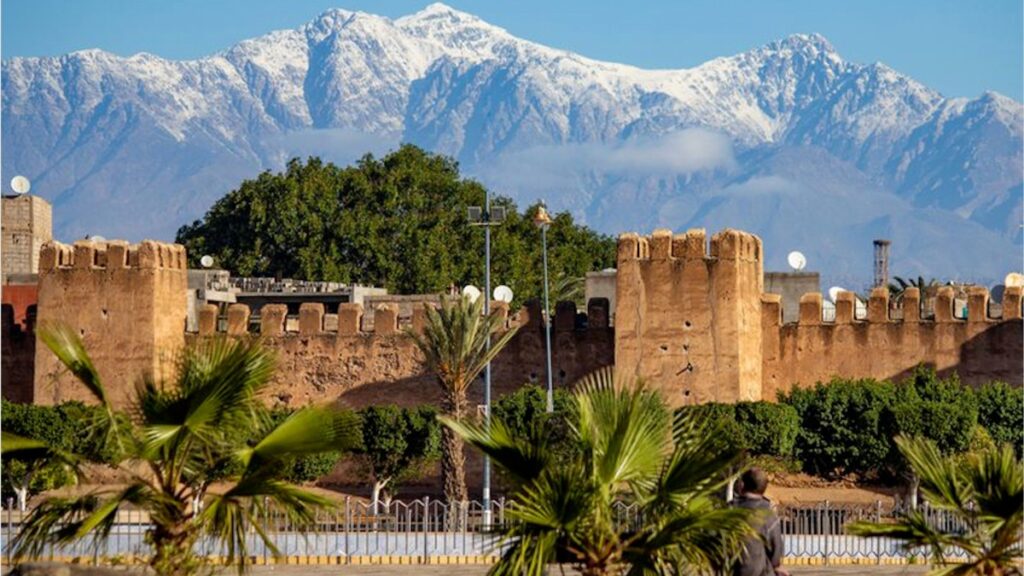
- MarrakeshThe red city at the foot of High Atlas, which combines the antiquity of history and the bustling city life.
- Ifrane, or “the Switzerland of Morocco,” in Middle Atlas, with its sloping roofs and snowy winters.
- Taroudantpearl Small Atlas, fortified by its ancient walls that tell stories from the golden age of Morocco.
Three atlases in one
Although united under the name “Atlas,” each part of this series has its own distinct character:
- High AtlasThe towering giant that separates the desert from the north, and includes the highest peak in Morocco and North Africa, Jebel Toubkal which rises 4,167 metersTo the north is the Middle Atlas, and to the south is the Anti-Atlas.
- Middle Atlas:A paradise of greenery and forests, where the summit reaches a height of Bonasser to 3,340 meters.
- Small Atlas:The land of oases and valleys, topped by a peak Go towering in height 3,304 meters.
The peaks that tell the secrets of the sky
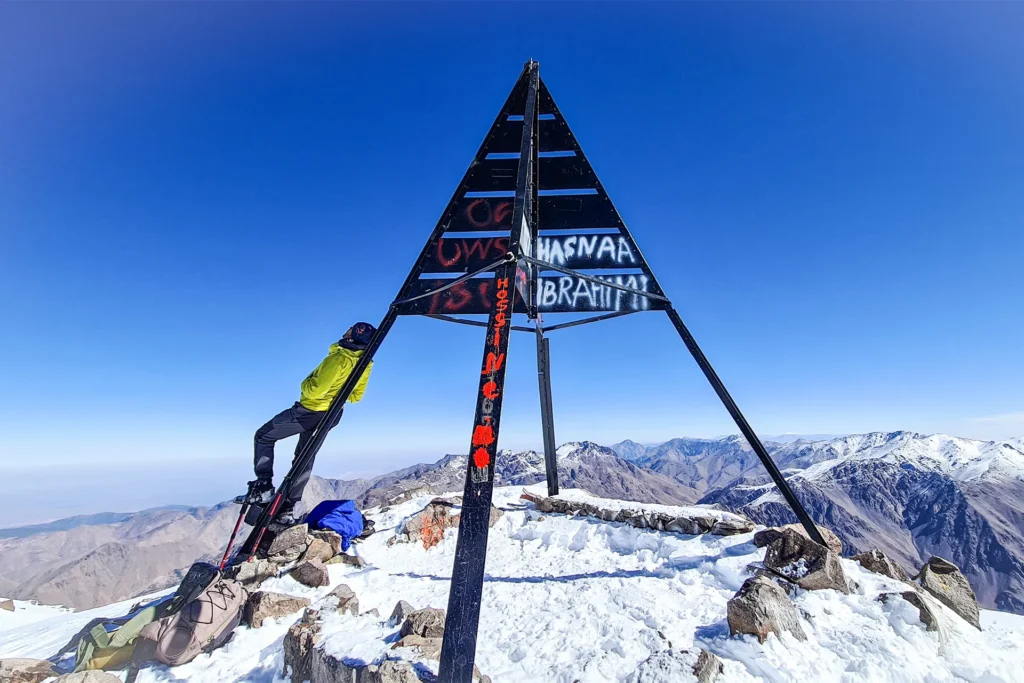
Toubkal: Throne of the Gods
Nothing beats standing on top Toubkal (4,167 m), where you feel as if you are literally on the roof of Morocco. This peak, adorned with a white blanket of snow in the winter, is a pilgrimage site for mountaineers from all over the world, who brave its rocky slopes to reach a point where they can touch the clouds.
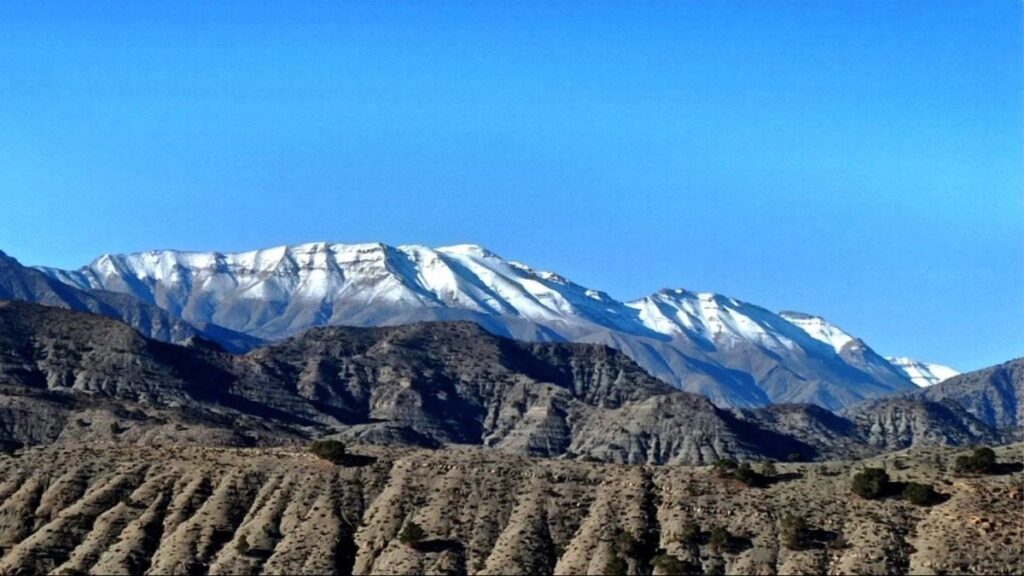
Bonasser: Forest Guardian
In the heart Middle AtlasThe mountain rises Bonasser (3,340 m) as a guardian of the cedar forests that adorn its slopes. This peak, accessible via trails that wind through vibrant forests, offers a breathtaking panoramic view at its summit.
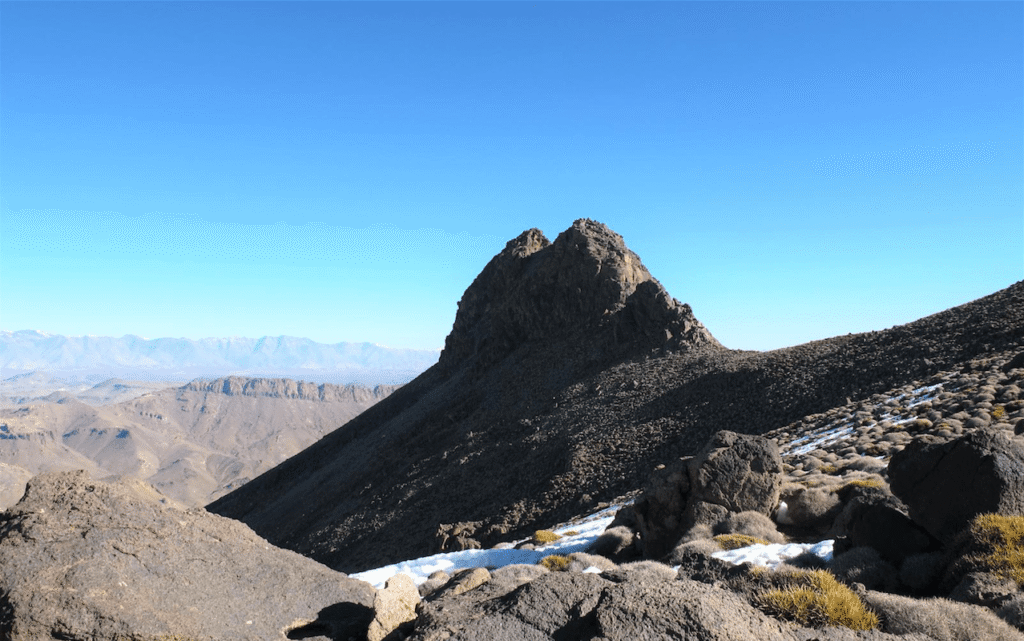
See: Giant of the South
even though Small Atlas Lower than its two siblings, but the summit Go (3,304 m) Proving that greatness is not measured in meters alone, this majestic rocky peak, surrounded by palm oases, is a testament to how nature can combine power and beauty in a single scene.
Rif Mountains: The Crown of Northern Morocco
Although Rif Mountains It is located in northern Morocco and forms a natural extension of the country's mountainous terrain, but it is... It is not considered part of the Atlas Mountains. Geologically and geographically, the Atlas Mountains are divided into: Three main mountain ranges (High Atlas, Middle Atlas, Anti-Atlas)While the Rif Mountains form a separate massif located on the edge of the Mediterranean Sea, they belong to a different mountain system linked to the Sierra Nevada Mountains in Spain across the strait.
The most important city in the Rif Mountains: Chefchaouen
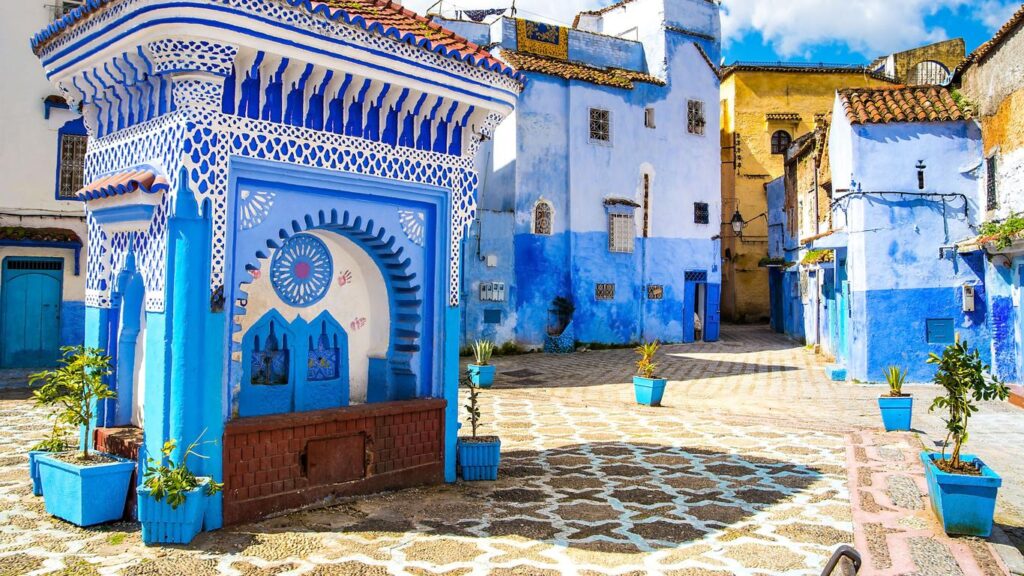
It is considered Chefchaouen (Or Chaouen) is the most famous city in the countryside, and it is blue gem It sits among the green peaks at a height of 600 meters Above sea level. Famous for its blue buildings and narrow alleys reflecting Andalusian architecture, it attracts tourists from around the world for its visual charm and mountainous tranquility.
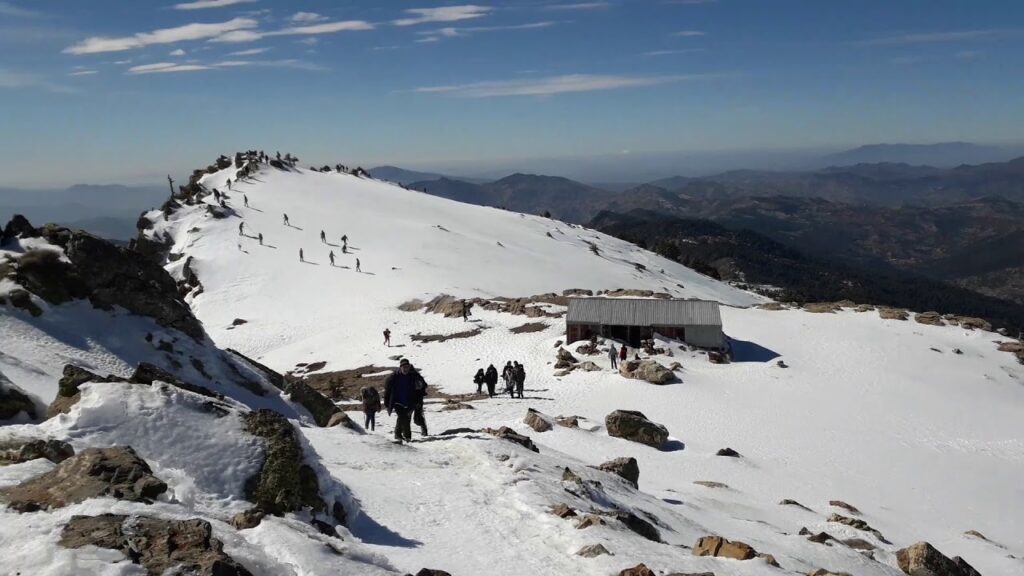
The highest peak in the Rif Mountains: Mount Tidighine (2,456 metres)
It is considered the summit Tidighin The highest peak in the Rif range, with a height of 2,456 meters, located near the city of FreshSurrounded by dense cedar and oak forests, this peak offers majestic views of the Mediterranean Sea and the northern plains of Morocco. It's a destination for hiking and mountaineering enthusiasts, although its rugged trails require experience.
The Rif Mountains are the greenest in Morocco due to their humid Mediterranean climate, and produce the finest... Olive oil and mountain honeyIt is also home toRifian Berber tribes Who have preserved their culture and language (Tarifit) for centuries.
The Atlas and Rif Mountains: Bastions of Resistance Against French and Spanish Colonialism
The Atlas and Rif Mountains played a pivotal role in the resistance to European colonialism (French and Spanish) in Morocco. These mountainous regions formed impregnable strongholds for the rebels, thanks to their rugged terrain and the organization of the Amazigh tribes. Resistance in these mountains had two aspects:
1. Resistance of the Atlas Mountains: The resilience of the High and Middle Atlas
A. The role of the Amazigh tribes
The Atlas tribes led - especially Ait Atta andAit Sghrouchen andAit Ourain - Fierce resistance against the French, taking advantage of the rugged terrain to implement guerrilla warfare.
B. Most prominent battles
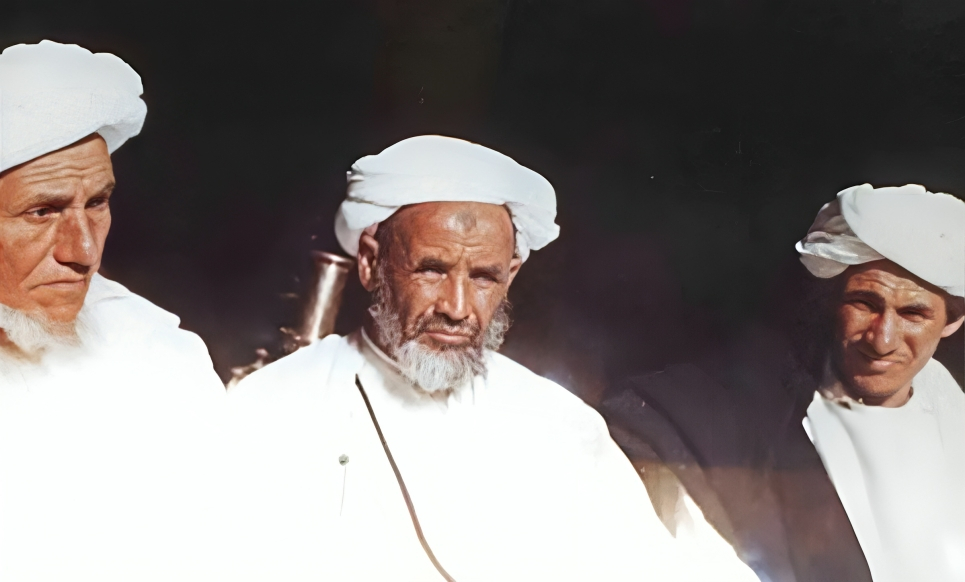
- Battle of Boukafer (1933):
It happened in High Atlas (Saghrouchen region) between the Ait Atta tribes led by Aso Obsalam And the French forces. The resistance fighters held out for42 days Despite French military superiority, it became a symbol of defiance.
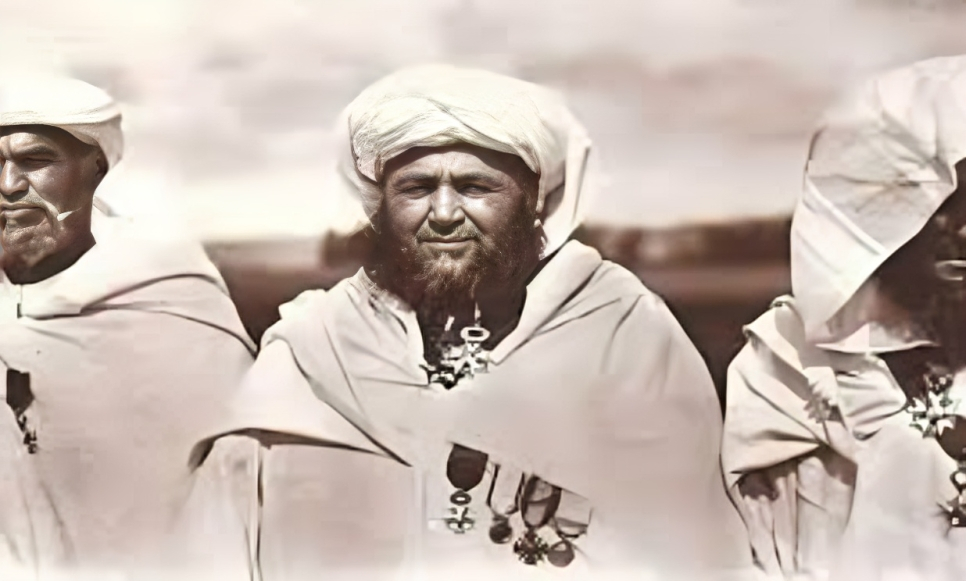
- Battle of Al-Hari (1914):
in Middle Atlas, where the resistance fighters were crushed, led by Mouha Ouahmou Ziani The French army, forcing France to reconsider its calculations. - Resistance of Muha or Saeed (1922-1934):
Led by the Amazigh leader Moha or Saeed In the Middle Atlas, using military cunning to defeat the French.
C. Tactics used
The resistance relied on:
- Attack and retreat Using mountain paths.
- mountain fortresses Like the peaks of Toubkal and Bounacer.
- economic boycott To prevent the French from controlling the oases.
2. Resistance in the Rif Mountains: The Epic of Muhammad ibn Abd al-Karim al-Khattabi
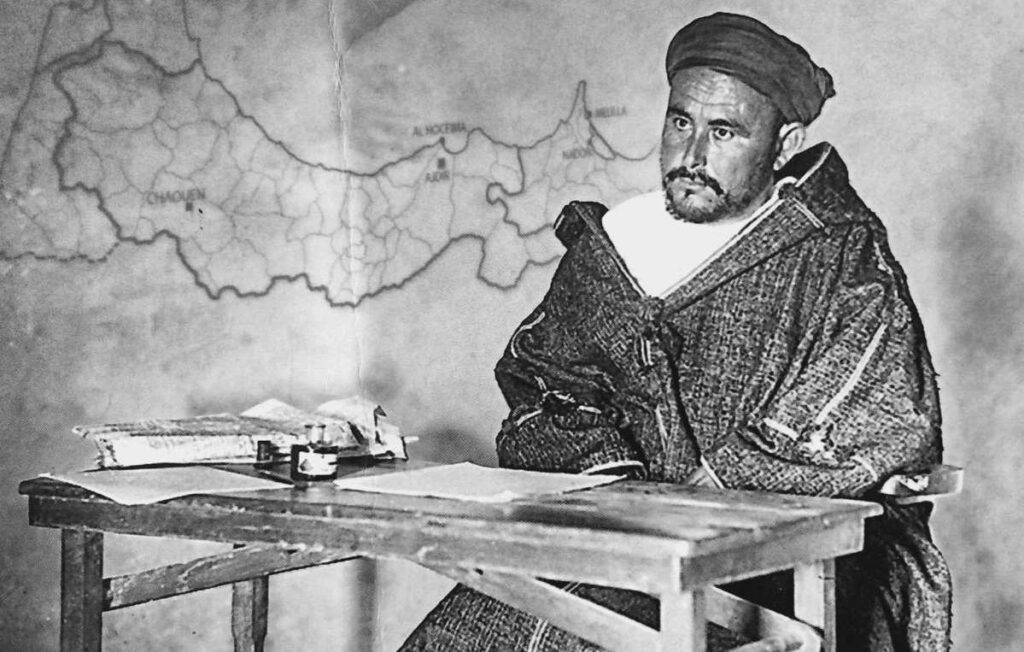
led Abd al-Karim al-Khattabi - One of the most intelligent strategists in military history - he led the region's tribes in resistance to the Spanish, and won a number of fierce battles.
Most prominent battles
- Battle of Annual (1921):
Al-Khattabi crushed a huge Spanish army (18,000 soldiers) with an army of no more than 4,000 fighters, astonishing the world. - Battle of Chaouen (1925):
Where the resistance fighters penetrated until they liberated the city from the Spanish. - Confrontation with the Franco-Spanish alliance (1926):
France used chemical weapons to suppress the resistance after its military failure.
C. Military rhetoric legacy
- He invented modern guerrilla warfare (which inspired Che Guevara and Vietnam).
- He established a regular army from the warring tribes.
- use mountainous terrain To neutralize European aviation superiority.
4. Why did colonialism fail to break the mountains?
- geographical ruggedness:It rendered tanks and planes useless.
- Tribal cohesionDespite their divisions, they united against the common enemy.
- economic resistanceCutting off the colonizer's supply routes.
The Atlas and Rif Mountains have turned into Legend of resistance She is still studying at military academies. While the battles have ended, her legacy lives on: Toubkal It tells the story of the resilience of Ait Atta, andTidighin Whispers of Khattabi's heroism. These mountains not only defended Morocco, but also taught the world lessons in dignity and freedom.





